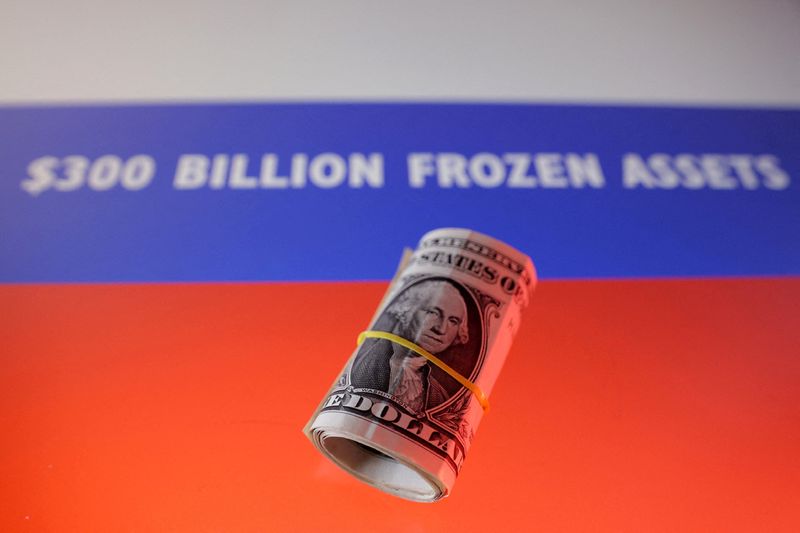By Jan Strupczewski
BRUSSELS (Reuters) -The European Union is searching for a way to finance Ukraine’s defence and reconstruction with Russian central bank assets immobilised in the West after Moscow’s invasion.
Under international law, sovereign assets cannot be confiscated.
The European Commission has put forward a plan it says would allow EU governments to use much of the 210 billion euros worth of Russian assets currently frozen in Europe, without actually touching them – a red line for many capitals and for the European Central Bank.
While there is political support for the idea in principle, some countries want more clarity on the legal and fiscal risks – notably Belgium, which hosts the Euroclear financial clearing house and has an annual national output of roughly 600 billion euros.
HOW WOULD IT WORK?
At the outset of Russia’s war in Ukraine, Euroclear was holding bonds for the Russian central bank. As these bonds have matured, the resulting cash balances have been frozen because of EU sanctions against Moscow and held by Euroclear.
The idea is to redirect these cash balances to the EU. In return the European Commission would issue zero-coupon bonds to Euroclear for the same amount.
The EU would then use the cash to issue a “Reparations Loan”. The loan would only be repaid by Ukraine once it receives war reparations from Russia in a peace agreement, effectively allowing Ukraine to spend the money now, rather than wait until Moscow pays up.
HOW MUCH MONEY IS AVAILABLE?
Some $300 billion of Russian assets are frozen globally.
Of this, 210 billion euros ($229 billion) are held in Europe, of which 185 billion euros are held by Euroclear, a Brussels-based central securities depository. About 176 billion euros of that is held in cash and the remaining nine billion worth of securities is set to mature in 2026. The EU will therefore have roughly 185 billion euros to work with.
The EU would first repay the 45 billion euro ($50 billion) G7 loan Ukraine agreed to last year. That would leave some 140 billion euros for the new loan.
The Commission has said it would wait for an International Monetary Fund assessment of Ukraine’s financing needs in 2026 and 2027 before deciding on the loan’s size.
Finland and Sweden estimate the size of Ukraine’s unmet financing needs during those two years at 130 billion euros.
HOW WOULD THIS BE DONE WITHOUT CONFISCATING THE CASH?
To avoid seizing the Russian assets, the idea is to transfer the cash from Euroclear to a newly created Special Purpose Vehicle (SPV) owned by EU governments, or G7 governments as well. In exchange, the European Commission would issue Euroclear with zero-coupon bonds guaranteed by the owners of the SPV.
The Commission says this would avoid touching the sovereign assets of Russia. The EU bonds would cover Euroclear’s risk against Russian litigation while the cash in the SPV could be invested more profitably than overnight deposits in the ECB.
Russia disagrees.
WHO CARRIES THE FINANCIAL RISK?
European Commission President Ursula von der Leyen has said the risk would be shared collectively.
The operation would need to be fully guaranteed by the bloc’s member states. The Commission’s preference would be to have all of the EU’s 27 member states and non-European G7 countries signing up to the SPV and issuing guarantees proportionate to the size of their economies.
Belgian Prime Minister Bart de Wever has told fellow EU peers that Belgium, as host of Euroclear, cannot carry the risk alone.
“If we take (Russian President Vladimir) Putin’s money, we use it, we’re all going to be responsible if it goes wrong,” he said.
De Wever also said he wanted maximum assurances over the plan’s legality.
WHAT HAS RUSSIA SAID?
The Kremlin has described the proposal as an illegal seizure of Russian property and cautioned there would be retaliation for the theft of Russian assets.
($1 = 0.8511 euros)
(Reporting by Jan Strupczewski; Editing by Philippa Fletcher and Mark Porter)

